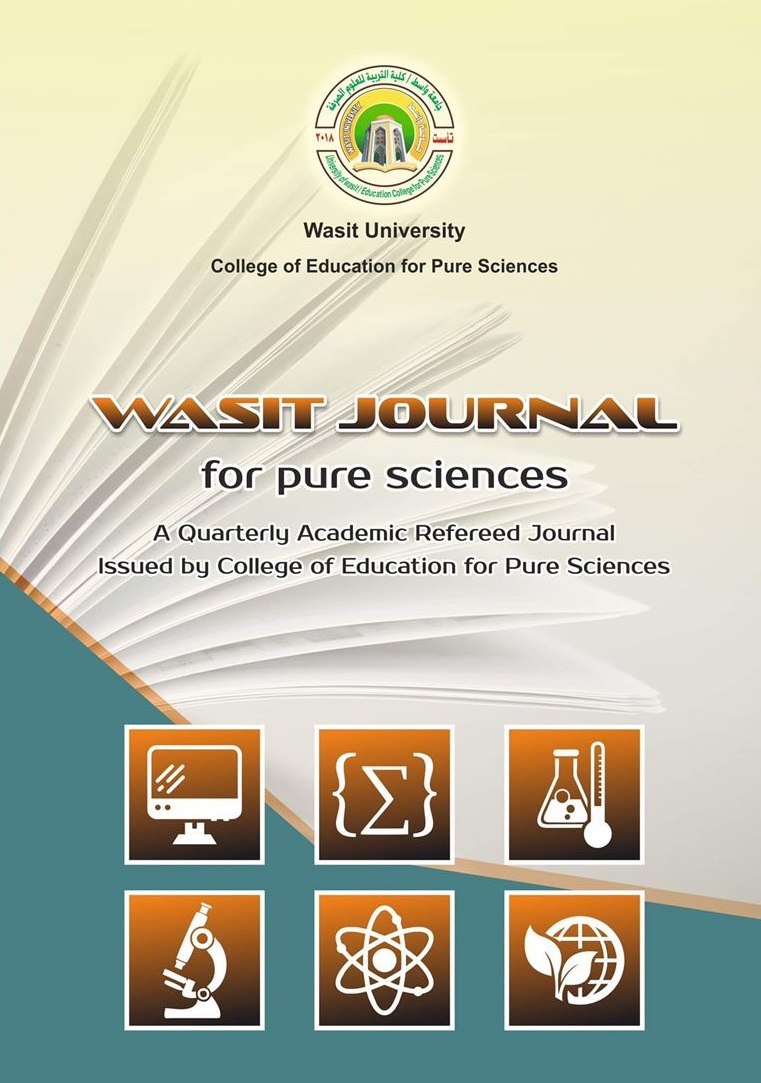Computational Approaches to Studying Reaction Mechanisms and Transition States in Quantum Chemistry
DOI:
https://doi.org/10.31185/wjps.834Keywords:
Computational Chemistry, Reaction mechanisms, Transition states, Density Functional Theory (DFT).Abstract
The Computational chemistry plays a crucial role in understanding reaction mechanisms and transition states at the atomic level. Quantum mechanical methods, particularly Density Functional Theory (DFT), provide insights into electronic structures, energy landscapes, and reaction kinetics. This study explores computational techniques such as Transition State Theory (TST), the Nudged Elastic Band (NEB) method, and post-Hartree-Fock approaches to identify reaction pathways and energy barriers. Molecular Dynamics (MD) simulations further examine reaction dynamics over time under various conditions.
This analysis of model reactions highlights key transition states and activation energies, demonstrating that DFT-based methods balance computational efficiency and accuracy. NEB simulations effectively mapped minimum energy paths, while TST calculations provided reliable reaction rate constants. The integration of time-dependent DFT (TD-DFT) enabled the study of excited-state reaction dynamics, crucial for photochemical processes. These findings confirm that quantum mechanical simulations can accurately describe chemical transformations, aiding in the design of novel catalysts, materials, and pharmaceuticals.
References
[1] Wencel-Delord J, Glorius F, “C–H bond activation enables the rapid construction and late-stage diversification of functional molecules”, Nature chemistry, vol. 5, no. 5, pp. 369-75, 2013.
[2] Eleuterio HS, “Olefin metathesis: chance favors those minds that are best prepared”, Journal of molecular catalysis, vol. 1, no. 65, pp.55-61, 1991.
[3] Fischer K, Jonas K, Misbach P, Stabba R, Wilke G. The “nickel effect”, Angewandte Chemie International Edition in English, vol. 12, no. 12, pp. 943-53, 1973.
[4] Davies IW, “The digitization of organic synthesis”, Nature, vol. 13, no. 570, pp. 175-181, 2019.
[5] Macarron R, Banks MN, Bojanic D, Burns DJ, Cirovic DA, Garyantes T, Green DV, Hertzberg RP, Janzen WP, Paslay JW, Schopfer U, “Impact of high-throughput screening in biomedical research”, Nature reviews Drug discovery, vol. 10, no. 3, pp. 188-195, 2011.
[6] Collins KD, Gensch T, Glorius F, “Contemporary screening approaches to reaction discovery and development”, Nature chemistry, vol. 6, no. 10, pp. 859-871, 2014.
[7] Robbins DW, Hartwig JF, “A simple, multidimensional approach to high-throughput discovery of catalytic reactions”, Science, vol. 9, no. 333, pp. 1423-1427, 2011.
[8] Troshin K, Hartwig JF, “Snap deconvolution: An informatics approach to high-throughput discovery of catalytic reactions”, Science, vol. 14, no. 357, pp. 175-181, 2017.
[9] Williams WL, Zeng L, Gensch T, Sigman MS, Doyle AG, Anslyn EV, “The evolution of data-driven modeling in organic chemistry”, ACS central science, vol. 19, no. 7, pp. 1622-1637, 2021.
[10] Brønsted JN, Pedersen K, “Die katalytische Zersetzung des Nitramids und ihre physikalisch-chemische Bedeutung”, Zeitschrift für Physikalische Chemie, vol. 108, no. 1, pp. 185-235, 1924.
[11] Zahrt AF, Athavale SV, Denmark SE, “Quantitative structure–selectivity relationships in enantioselective catalysis: past, present, and future”, Chemical reviews, vol. 120, no. 3, pp. 1620-1689, 2019.
[12] Taylor CJ, Pomberger A, Felton KC, Grainger R, Barecka M, Chamberlain TW, Bourne RA, Johnson CN, Lapkin AA, “A brief introduction to chemical reaction optimization”, Chemical Reviews, vol. 123, no. 6, pp. 3089-3126, 2023.
[13] Houk KN, Liu F, “Holy grails for computational organic chemistry and biochemistry”, Accounts of chemical research, vol. 50, no. 3, pp. 539-543, 2017.
[14] Kohn W, “Nobel Lecture: Electronic structure of matter—wave functions and density functionals”, Reviews of modern physics, vol. 71, no. 5, pp. 1253, 1999.
[15] Sliwoski G, Kothiwale S, Meiler J, Lowe Jr EW, “Computational methods in drug discovery”, Pharmacological reviews, vol. 66, no. 1, pp. 334-395, 2014.
[16] Ess DH, Wheeler SE, Iafe RG, Xu L, Çelebi‐Ölçüm N, Houk KN, “Bifurcations on potential energy surfaces of organic reactions”, Angewandte Chemie International Edition, vol. 47, no. 40, pp. 7592-7601, 2008.
[17] Peng Q, Paton RS, “Catalytic control in cyclizations: From computational mechanistic understanding to selectivity prediction”, Accounts of Chemical Research, vol. 49, no. 5, pp. 1042-1051, 2016.
[18] Reid JP, Sigman MS, “Comparing quantitative prediction methods for the discovery of small-molecule chiral catalysts”, Nature Reviews Chemistry, vol. 2, no. 10, pp. 290-305, 2018.
[19] Fukui K, “The path of chemical reactions-the IRC approach”, Accounts of chemical research, vol. 14, no. 12, pp. 363-368, 1981.
[20] Schlegel HB, “Exploring potential energy surfaces for chemical reactions: an overview of some practical methods”, Journal of computational chemistry, vol. 24, no. 12, pp. 1514-1527, 2003.
[21] Schlegel HB, “Optimization of equilibrium geometries and transition structures”, Journal of computational chemistry, vol. 3, no. 2, pp. 214-218, 1982.
Downloads
Published
Issue
Section
License
Copyright (c) 2025 Sarah Badri Jasim, Khalidah H. M. Al Furaiji, Asam Hussein Ali

This work is licensed under a Creative Commons Attribution 4.0 International License.









